Morten Meldal
Biographical
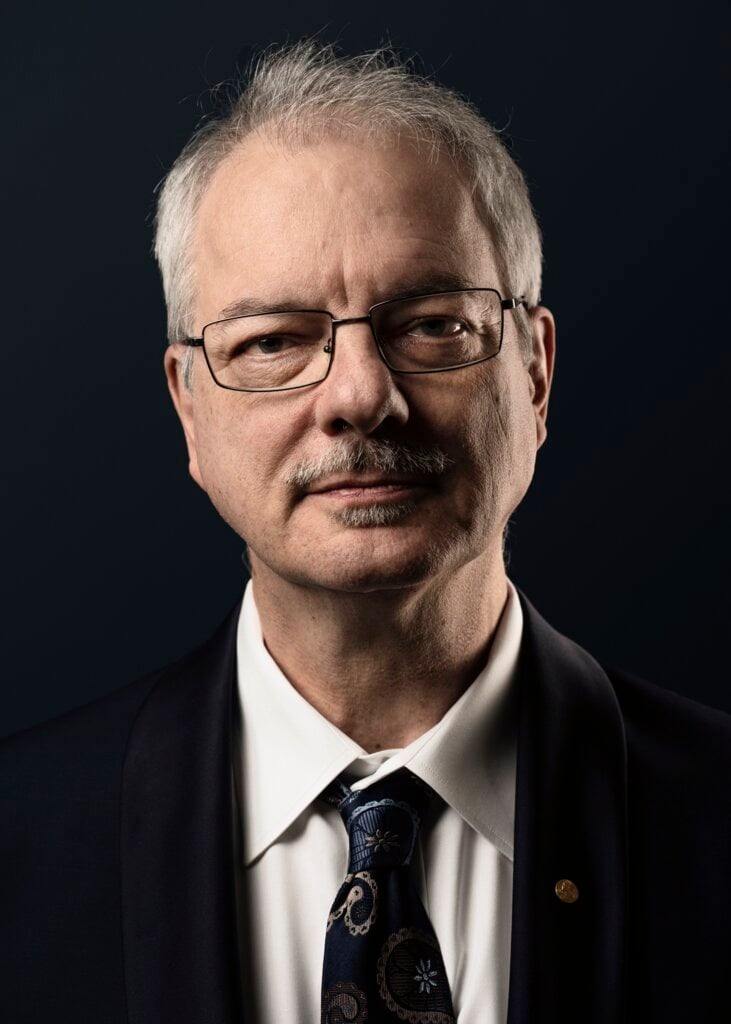
The Early Years: Birth to High School
I was born in a small suburb of Copenhagen, Denmark, on 16th January 1954. I was the first of three children born to my parents, Hanne and Thorkil Meldal. My mother was from the Danish island of Bornholm in the Baltic Sea and was the daughter of Niels Anker Koefoed, who was a farmer and worked with the Danish resistance during the second world war. In my younger years, my mother worked as a schoolteacher and was a very creative artist. I remember spending time with her foraging in nature looking for objects that she would incorporate into her paintings. One of her more “creative” works was one incorporating three dead frogs, which I still vividly remember today. My mother was a very curious and open person who could easily forge relationships with anyone. Looking back now, I can see that the creativity and curiosity that she awoke in me early on, had an impact on my choice of career as a scientist.
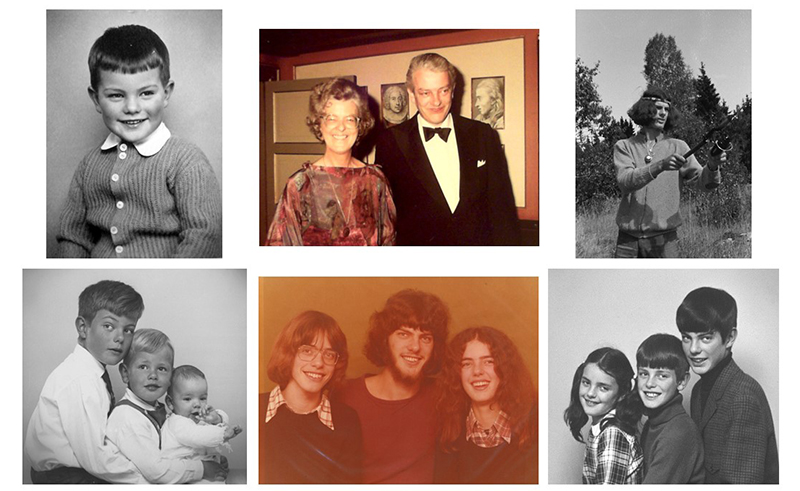
If my mother exemplified creativity and a free spirit, my father was the opposite. He was a businessman who eventually worked his way up to become the head of Philips in Denmark. My father was very structured and disciplined, particularly when it concerned fiscal matters. From the time I turned 10 until I left home my father required my siblings and me to keep track of how we spent our weekly allowance to get the next. If we were unable to document how the money was spent, then we would not get an allowance the following week. I, of course, greatly resented this strictness and only did the minimum to secure the money that I needed and in my late teenage years, I rebelled against my father’s strictness.
We lived in a small two-family house near a beautiful lake and natural reserve. I spent my young days roaming around and exploring nature with my friends. I would sometimes leave home to explore without informing my parents and return home much later, very proud that I managed to get around the neighborhood all on my own. I found out much later that family and friends in the neighborhood would call my parents to let them know my whereabouts and that I was safe. Being able to explore in a safe and supportive environment is a key element to success.
During every vacation my siblings and I were shipped off to our grandparents, who had the most beautiful farm on Bornholm. My grandmother, Ady, was a strong and noble woman who never remarried and ran the farm for 5 years after my grandfather passed away. On the farm, I spent my days romping through the forests, meadows, and beaches. When playing hide and seek, I would lay down amongst the barley fields and look up at the blue skies. I would wonder about the universe, about life, about humanity. I discovered my love for nature that has been with me ever since, and a burning desire to understand the mysteries of life and the universe. I guess you could say that I was a scientist in the making, although I did not know that at the time. One of the memories of that time that have stuck with me was the overseer who helped my grandparents manage the farm spanking his children on a weekly basis (it was allowed in those days). The rationale was that they would do naughty things anyway, some of which the overseer would not even know about. Hence, they would be punished for what they had done, and what they could have done. I never quite understand that and was even more grateful for the freedoms that my grandparents and parents allowed me. Fear is not a good motivator and a certain way to kill creativity. However, I must agree that they were really naughty at every chance they got.
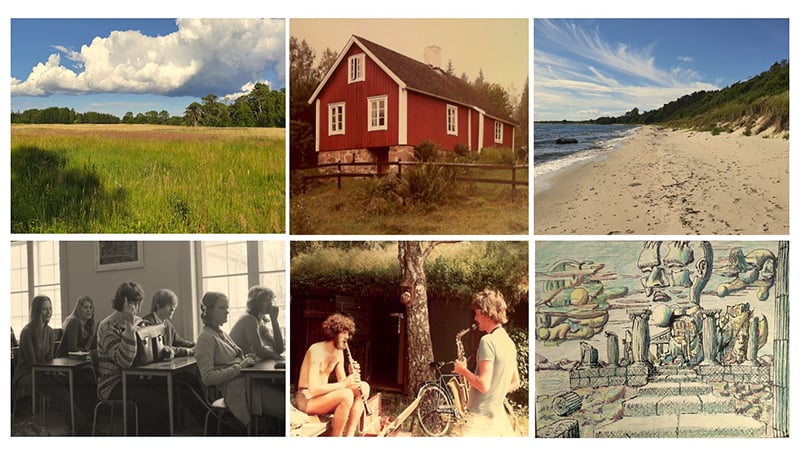
As my father rose through the corporate ranks at Philips, so did our income and standing in society. We then moved from Lyngby, first to Hørsholm, and from there to the affluent town of Rungsted, where I attended Rungsted Gymnasium (high school). During high school, I started to rebel against the firmness of my father and the expectations that I should follow in his footsteps and enter the world of business. I was not too attentive to my studies and did not get the best grades. My parents did not know how to handle the situation and their response was that what I needed was more discipline and structure. At 15, I was strongly encouraged by my parents to get a part-time job – which I did. I spent the afternoons stacking heavy bricks at a brick factory. I am convinced that my extraordinarily long arms are a result of adapting to carrying this heavy load of up to 12 tons a day. High school was a time of forging our identity and what seemed to be of major importance was that we lived up to the trend-defined expectations of classmate networks. Only a few of us spent the required time on solving homework exercises, and most of our time was dedicated to sports and friendly get-togethers.
One of the best things that came out of Rungsted Gymnasium is my friendship with the painter and artist Henrik Schutze. Our life-long friendship included sharing and developing as artists (painters) and musicians and is a common bond between us to this day. Henrik, Klaus Mortensen, and I spent many hours playing the guitar or the clarinet. I learned to play the guitar in elementary school and played throughout high school. I took a break from playing during my Master’s degree. Since my PhD studies, I have regularly played a 12-string guitar or a 6-string electric guitar in the evenings, just before bed, as a way of unwinding and preparing my mind for innovative solutions. Being able to develop within the creative arts, through the influence of my mother and my friend Henrik has impacted my way of thinking and approaching scientific problems. I am more creative in my solutions and I am convinced that great scientists may also often be fantastic artists and cooks.
The University Years
After high school years of playing around with chemicals to make rockets, fireworks and gunpowder I started engineering studies at the Technical University of Denmark (DTU). Most of my friends started studies in architecture at Royal Danish Academy, but something drove me towards science and particularly applied sciences i.e., engineering, which at the time was one of the best educations in Denmark.
I completed my master’s degree in chemical engineering in 1981 with a project supervised by Dr. Jørgen Øgaard Madsen on synthesis of indoles. However, during the studies, it became clear to me that I did not want to work as a production engineer and I rather wanted to study and answer fundamental, basic questions within science, since this was far more interesting. I then decided to do a PhD in Chemistry at DTU and approached Dr. Klaus Bock, who was known to be a demanding supervisor but also had access to one of the first superconducting NMR instruments in Denmark. I found NMR was a fascinating technology for understanding the structure, dynamics, and interactions of molecules. Klaus Bock had all the required expertise to study complex synthetic products. My thesis was on the synthesis of complex carbohydrate O-antigens of Salmonella Typhimurium rich in deoxy sugars. We managed in collaboration with the Canadian research group of David Bundle to produce many papers on the structure and function of these O-antigens, including their interaction with an antibody by crystal structure. Carbohydrates became a major part of my research interests in the first half of my career.
Choosing a career in science was just one part of me claiming my identity and breaking away from the expectations from my family. In my early years at DTU, I became involved in a group of Marxist-based students and had many intense discussions at home with my parents who were more on the right side of the political spectrum. The discussions became so dominant in the daily family time that my parents invited me to find another place to live to keep the peace and prevent bad influence on my younger siblings. I moved several times in the first years of studying, starting with a dormitory, then a student community and after two years an apartment in Copenhagen, shared with my friend Mick Ammentorp and his 120-pound Newfooundland dog, I moved into a collective in a small village of Asserbo (a 2-hour train ride from DTU).
It was there that I met my first wife, an Italian ceramist, Sandra Davolio. Sandra and I fell in love and got married. In 1982, my daughter Anna was born, and we moved out of the collective, first to an apartment and then to a larger home, a house in Måløv, 20 km from Copenhagen. We spent a lot of time refurbishing the old house so that it could accommodate Sandra’s workshop, where she could create her ceramics, and a home laboratory where I could test out ideas and do experiments in the evenings and on weekends. That way I would be physically present and not miles away in the lab at DTU and later at Copenhagen University and Carlsberg. I enjoyed renovating our home myself. I have always been skilled with my hands. It probably stems from my father, who had a workshop at home and who taught me carpentry and other home repair skills. He was self-taught and from his example, I also taught myself a lot of the skills needed to repair my home as well as to build and repair equipment and instruments needed for my research.
These were very productive days, when I developed combinatorial chemistry and Sandra her incredible and unique ceramic workstyle. Our home served as a hub for get-togethers with many colleagues, friends, and students over the years.
Our summers were spent travelling in our orange Volkswagen van to different Italian cities where Sandra held workshops on ceramics. Alternatively, we drove north to Sweden to my parent’s summer house where we detached from the world and immersed ourselves in nature, talking and simple living. As a scientist, I could never fully detach from the burning questions I wanted to answer. But these breaks in a creative or quiet environment often triggered ideas that I could later pursue upon returning to the lab.
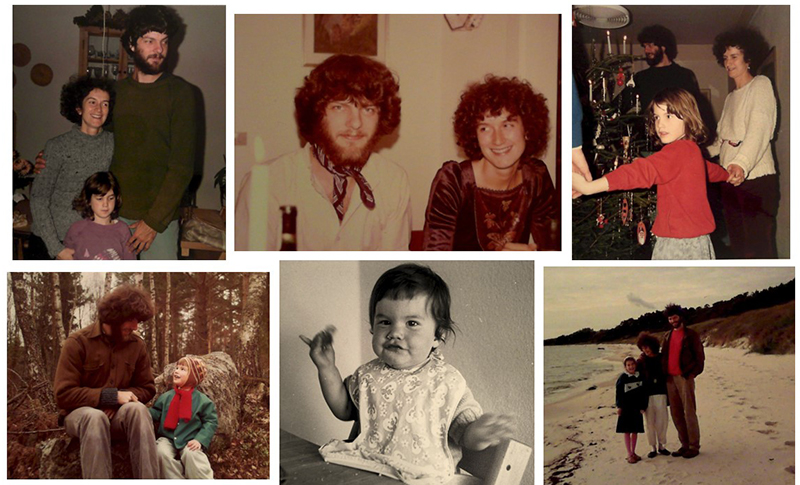
Upon completion of my PhD in 1983 at DTU, I obtained a 3-year postdoctoral fellowship to work on peptides at DTU. The study was to establish peptide chemistry and synthesize peptide antigens from bacterial fimbriae from E. coli K-88 for collaboration on their immunology with Dr. Per Klemm. We established peptide assembly, managed to produce an effective immune response and could characterize the origin of immunogenicity. At that time, I also knew that I wanted to do more research with the most abundant building blocks of nature: carbohydrates and peptides. To augment my experience in peptides, I wanted to work more within synthetic peptides as that would provide the tools to enable combinatorial synthesis. During this postdoctoral period, I convinced Dr. Robert Sheppard at MRC in Cambridge that I should spent six months in his laboratory. This was an exciting and productive period of fundamental research into the technology, methods, and chemistry of peptide synthesis. I was involved in development of the emerging automated Fmoc peptide synthesis, which has since become the main technology used. We were able to establish the first monitoring technology based on amine-driven color change using 3-N-hydroxybenzo-1,2,3-triazin-4-one as a coloring agent. We also prepared all the Fmoc-amino acid active esters of this N-hydroxylated catalyst for use in direct couplings.
Copenhagen University 1.0 to Carlsberg Laboratory
Upon returning to Denmark, I worked as a postdoctoral fellow at the H.C. Ørsted Institute at the University of Copenhagen. Armed with this experience in peptide synthesis, I combined this new knowledge with my expertise in carbohydrates to develop glycopeptides to interrogate various biological phenomena. For example, glycosylated proteins are critical to the modulation of the way the immune system functions, and I needed multiple (lycol)peptides to explore their immunological behavior. I then began research in this field. However, at that time, there were no elegant and efficient methods for quickly synthesizing the myriad of peptides and glycopeptides needed for such research. Solid phase peptide synthesis was the starting point in developing these methods. However, the carboxyl activating groups used at that time were unsuitable and lacked the stability needed when carrying out glycosylations of amino acids, under acidic conditions. During this time, I developed the use of pentafluorophenyl Pfp-esters for simultaneous temporary protection and activation amino acid carboxylate groups. Pfp esters were stable under acidic conditions and allowed us to carry out acidic glycosylations to create glycosylated building blocks for subsequent use in peptide synthesis.
Once I had established the chemistry, I still needed to overcome the challenge of how to rapidly synthesize and cleave multiple peptides at the same time. Solution phase chemistry did not promote speed and solid phase synthesis was the way to go. At that time, the available peptide synthesis instruments allowed one to synthesize one peptide at a time, at that time a quite slow process. Parallel continuous flow synthesis of peptides was not yet established as an alternative to single compound synthesis. I then proceeded to design a multiple column peptide synthesizer that would synthesize in a manual fashion, 20 peptides at a time. My engineering background gave me a good understanding of how to design the equipment with the right flow and pressure differentials and which was made of an inert material (Teflon) that could withstand the acidic and basic conditions used during SPPS. I used a slight overpressure on the bottom of the 20 wells to keep the reagents and solvents inside the wells during the coupling and washing steps. The use of an overpressure simplified the design of the instrument and avoided the use of an outlet and valve for each of the 20 reactors. Therefore, the unique design featured a single stopper for all the 20 wells. The bottom of each reaction well was fitted with a sintered Teflon filter. I was fortunate that my neighbor in Måløv had the right tools such as a lathe and a milling machine that I would use to craft the system of reaction wells in a solid Teflon block.
I tested and optimized multiple column peptide synthesis (MCPS) using synthetic PEGA resin that I developed around the same time. The polystyrene resins that were available at the time did not swell efficiently in the solvents used for peptide synthesis and particularly for on-bead assays. I then developed a series of resins based on polyethylene glycyl (PEG) that enabled the resin to swell in non-polar organic solvents as well as water-based solvents. This enabled synthesis of difficult sequences and later, facilitated using one-bead-two-compound combinatorial library approach that I used to identify enzyme inhibitors. My very first MCPS paved the way for future commercial multiple peptide synthesizers once the patent lapsed. The first MCPS instrument can now be seen at the Nobel Prize Museum, and the PEG-based resins were critical milestones to my future research within solid phase combinatorial chemistry and my search for quantitative chemical transformations (QCTs).
In 1988 Professor Klaus Bock was appointed head of the Chemistry Department at the Carlsberg Laboratory and invited me to join the institute and be responsible for building a strong synthesis unit for biomacromolecules based on my work within peptides and glycopeptides in a combinatorial approach. Klaus has been a great advocate and sponsor through my career, and I am very grateful for his support. I must admit that administration and navigating office politics are not on the list of my best skills, and I was very happy that Klaus provided great support to enable me to navigate these. I could focus on the science. We secured funding from two EU programs. The first was a research award from the EU science program in 1992. The award supported research within the development of methods in glycopeptide synthesis program in collaboration with the group of Professor Hans Paulsen at the University of Hamburg.
Later, in 1995 we were awarded an INCO-EU-DC program grant to develop cysteine protease inhibitors for parasitic proteases. It was a global collaboration including laboratories of Dr Graham Coombs (Glasgow, Scotland), Dr Med Luis Juliano (Sao Paolo, Brazil), Dr Med Julio Sharfstein (Rio de Janiero, Brazil) and Dr Jorge Arevalo (Lima, Peru). During that program, we further developed the concept of one-bead-two-compound libraries and their use in screening for enzyme inhibitors in a fluorescence-quenched on-bead assay. The program very nicely integrated the discoveries developed earlier: SPPS using stable Pfp esters, MCPS now using a modified version suitable for combinatorial library synthesis, PEG-based resins that were suitable for synthesis and biological assays in water. It was also at that time that the work we did began to be recognized by the scientific community and some of the notable awards I received were the Mitzutani Foundation Award (1995), the Danish Society of Chemistry (NKT) Award (1996), the Leonidas Zervas Award from the European Peptide Society (1996), the Danish Ellen and Niels Bjerrum Gold Medal in Chemistry and the Bjerrum-Brønsted-Lang Award from the Danish Royal Society of Science and Letters (1997). While I do not believe that the motivation for doing research should be to get accolades and awards (e.g., the Nobel Prize), it was highly rewarding and appreciated to receive these recognitions of my work. The recognition facilitated acquisition of funding and research grants from various funding agencies. In 1996, I was appointed Adjunct Professor at DTU and at the University of Pharmaceutical Sciences, Copenhagen (now part of Copenhagen University). By these appointments, I was able to teach chemistry to university students, something that I missed doing as a professor at Carlsberg Laboratory.
In 1997, I received a grant from the Danish Cancer Society to study glycopeptides as vaccines for treatment of cancer. And in 1997 I was awarded a large 5-year grant by the Danish National Research Foundation to establish a Solid Phase Organic Chemistry Center (SPOCC) at Carlsberg Laboratory. The purpose of the center was to develop quantitative organic reactions for solid phase combinatorial chemistry. As mentioned earlier, there was a need for new types of quantitative chemical transformations that could be performed orthogonally and on solid phase. Particularly within the context of on-bead screening, which required that the compounds attached to the solid support were pure. The SPOCC center grew rapidly and at the time of the CuAAC discovery we were around 25 PhD’s and Postdoc’s from all over the world. The SPOCC center and Carlsberg Laboratory was a great place to do fundamental scientific research. There was close collaboration with the Danish NMR center, a facility that included 800, 600 and 500 MHz NMR spectrometers and which was established by Professors Klaus Bock and Flemming Poulsen. This center and a Micromass HR-Mass spectrometer provided core technologies vital for the results obtained in the SPOCC center. We are grateful to Dr. Charlotte Gotfredsen, Bent Ole Petersen and Professor Jens Duus for supervision and maintenance of the NMR facilities and their scientific contributions, in particular, towards NMR analysis of complex resin-bound compounds.
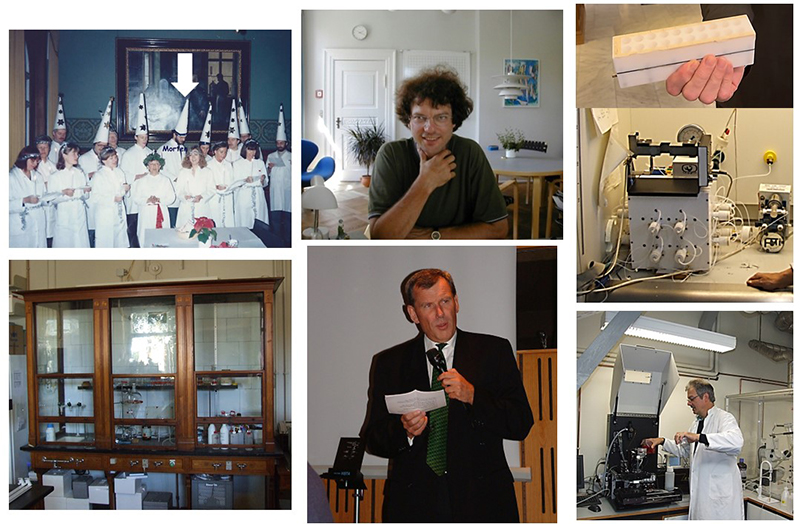
The period between 1988 and 1998 was extremely busy and I focused most of my attention and energies on building a career and finding fundamental questions to answer through research. Throughout my career, I have always spent time a lot in the fume hood doing experiments myself and keenly observing what happened. Maybe as a consequence of this single-minded focus (who knows?), in 1998, my wife Sandra and I sadly decided to part ways and end our marriage.
In the period following the divorce, I continued to focus on my fundamental research at the SPOCC center and also looked into ways of commercializing some of the inventions that came out of my research over the years. In 2000, I founded a biotech start-up, Combio, together with my long-time collaborator and friend, Søren Mouritzen and with the backing of Carlsberg Brewery. Combio’s core technology was based on use of our new PEG-based resins in combinatorial synthesis and on-bead screening of protease inhibitors. The purpose was to discover drug candidates primarily within infectious diseases. Combio also provided an opportunity for employment of the PhDs and Post Docs from my lab. After three years Combio was successfully sold to the company Arpida. However, in the process, the technology and target focus was unfortunately changed towards small molecules.
At the turn of the millennium in 2000, the year of the CuAAC discovery, I got married again to Dr. Phaedria Marie St.Hilaire, a Dominican-born scientist and strong advocate for women’s rights and diversity and inclusion (www.prowoc.org). We met when Phaedria worked at Carlsberg Laboratory, where she had very successfully developed methods for the synthesis, screening, and analysis of glycopeptide libraries. We developed a great friendship, which eventually led to marriage. One day in 2001, on a bike ride near Copenhagen we stumbled upon a small, old house in a beautiful nature reserve and decided to make it our home. We spent more than a year renovating it – the second home I had to rebuild. In 2003, we were very happy to welcome our son Ajani to the family. We enjoy adventures and traveling around the world. Phaedria has been and is a treasured confidant and sparring partner – someone from whom I seek advice on all matters, big and small, personal, scientific, and professional. I am deeply grateful to have someone with whom I can share many of my interests, and who challenges me to improve my personality.
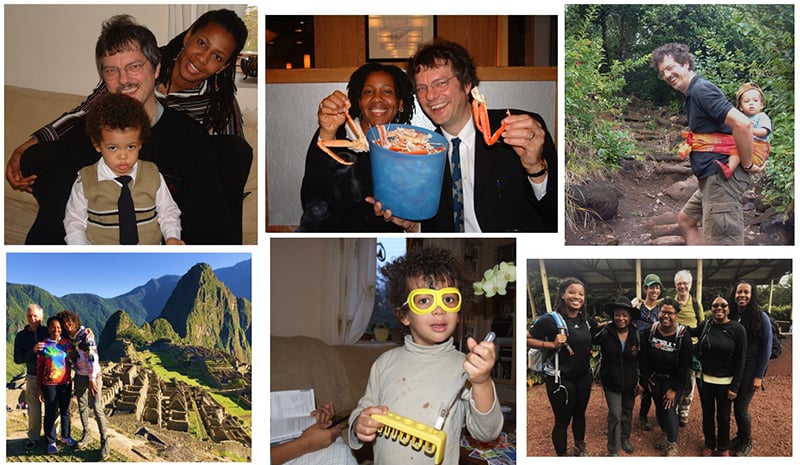
In 2003, inspired by the success of Combio, Carlsberg Brewery established a special unit at the Carlsberg Research Center called Carlsberg Biosector. The purpose of the center was to commercialize the inventions that came out of the basic research of the institute. The Biosector served as an incubator for various ideas from the entire research center. Three ideas from the SPOCC center were part of the Carlsberg Biosector: 1) Affinyx – a rapid and differential way of screening for selective receptors, 2) VersaMatrix, which specialized in the manufacture and application of encoded PEG-based resins in combinatorial science and affinity ligand development for chromatographic applications and 3) 2cureX which utilized combinatorial, fluorescence-based screening of primary cellular cancer targets. 2cureX still exists today and VersaMatrix was bought up by the company Novo Nordisk. My wife, Phaedria, was instrumental in establishing the technology of the Biosector as a group leader and eventually became Director of Research and Development at VersaMatrix. When the company was acquired by Novo Nordisk she moved with the company towards new challenges.
The return to Copenhagen University
The years 2000 to 2004 were a very happy period when I was given the freedom and funding to pursue basic research interests and as well as commercialize the research in several biotech spinouts. It was also in that period that the CuAAC reaction was discovered as a result of a mixture of serendipity, detailed observations, and rigorous analysis of what happened when a reaction does not go as planned. You can learn more about the story of this discovery in my Nobel Prize lecture. When we announced the findings in 2001 at the American Peptide Symposium, I had no idea that this reaction would become so well-known and widely used in myriad applications, from drug discovery to materials science.
It is a universally acknowledged truth that no good thing lasts forever, and in 2005 the Carlsberg leadership decided to redirect the focus of the research center to the beer brewing processes. This change in strategic focus led to the complete closure of chemistry related research and disassembly of the associated facilities relatively quickly over a couple of years. During this period most of the professors and skilled researchers at Carlsberg Laboratory left the institute for employment in other organizations, while I tried to adapt my research to the new policies. For example, I worked on developing a new material that could be used for biodegradable beer bottles and packeting. It was challenging to secure funding for basic research in that period. Having lost many easily accessible in-house collaborators, I was somewhat despondent as I considered my next move. One highlight in that period from 2005 – 2011 was the honor of receiving the American Chemical Society’s Ralph F. Hirschmann Award in 2009 for my work in peptide chemistry and combinatorial science.
In 2011 I was contacted by the head of the Department of Chemistry at the University of Copenhagen (KU), Professor Mikael Bols. He invited me to apply for a position as a professor at University of Copenhagen and head of the associated Nano Science Center. I accepted his invitation, applied, and got the position. I started my research at KU with research grants from Novo Nordisk (2012) and the Lundbeck Foundation (2012). Shortly after in 2013, I was fortunate to be granted funding for a Center for Evolutionary Chemical Biology (CECB) for five years at the Department of Chemistry. We established a multidisciplinary center based on using click chemistries and combinatorial technologies in the studies of bio-macromolecules and cells. As a full professor at the university, one of my responsibilities was teaching. It has been some decades since I taught fundaments organic chemistry to students, and I spent a lot of time and effort creating new material and developing modern ways of teaching.
One of the problems were that chemistry majors were taught chemistry at the same level as all other students, and the students did not identify with their chemistry. I was allowed to separate out the chemists for their teaching in organic chemistry. To me it is important that students learn by curiosity and study in a positive spirit, while building their professional identity. Therefore, we as teachers need to meet the students where they are. Students need to be actively engaged during class. I produced advanced lecture material and teaching videos exclusively covering the first semester for chemists at University of Copenhagen. This was a great period and chemistry students thrived. Currently, I have successfully tried to implement some of the same principles for an advanced chemistry course at the master’s level.
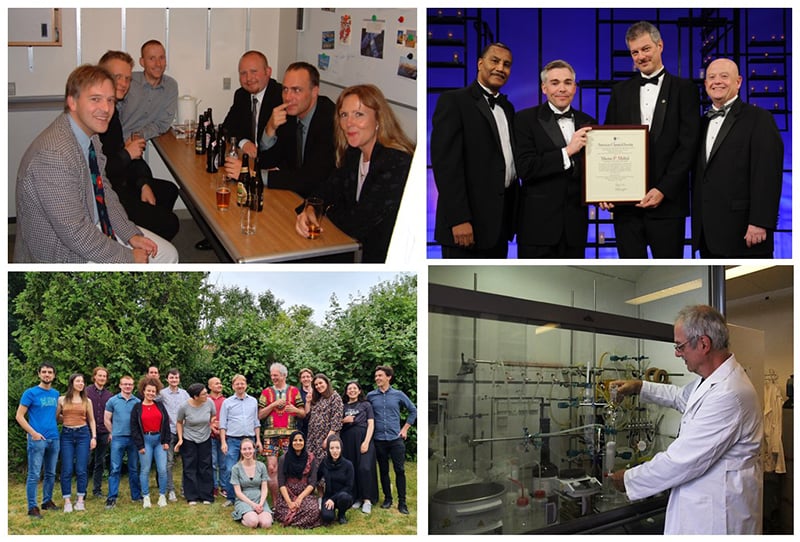
In spite of fantastic evaluations, it was not possible to raise funding for the continuation of the CECB center. Starting in 2018, the center gradually lost its expertise in protein expression and cellular studies. In 2019, I and my friend and entrepreneur Dr Søren Mouritsen, with whom I had founded Combio 20 years earlier, established a company, Betamab, based on the betabody technology emerging from CECB. The company collaborated with the allergy drug company Alka Bello. With limited funds and resources, I worked day and night, weekdays, and weekends on complex synthesis of click-constrained betabodies and microproteins. Unfortunately, we were unable to produce results that could compete with monoclonal antibodies. In 2020, Betamab’s activities were discontinued. However, in CECB we continued the betabody and microprotein research with support from many master students who found the structure activity concepts of CECB fascinating. Since 2020, I have been focusing on teaching the upcoming generation of chemists. I have had many challenges securing new funding which would allow me to pay PhD and postdocs and have started wondering whether ageism could be at play. In September 2022 I received a grant from the Velux Foundation towards design and synthesis of functional microproteins.
Then on the 5th of October 2022, to my surprise and delight, I was awarded the Nobel Prize in Chemistry! This award has given me a new lease on life: new funding to pursue my research in chemistry and a platform from which I can advocate for combination of new chemistries, molecular design, combinatorial science, and new assays towards the discovery of new drugs and new materials to improve the sustainability and quality of life. I am also particularly excited to see what our improved understanding of quantum properties within chemistry will bring us in the coming years. I believe the Nobel Prize in Chemistry is instrumental as a tool to guide and direct future research on a global scale. It also inspires young curious students to venture into chemistry and other natural sciences. Now I am looking towards the next chapter in my research and my life.
© The Nobel Foundation 2023
Nobel Prizes and laureates
Six prizes were awarded for achievements that have conferred the greatest benefit to humankind. The 12 laureates' work and discoveries range from proteins' structures and machine learning to fighting for a world free of nuclear weapons.
See them all presented here.
